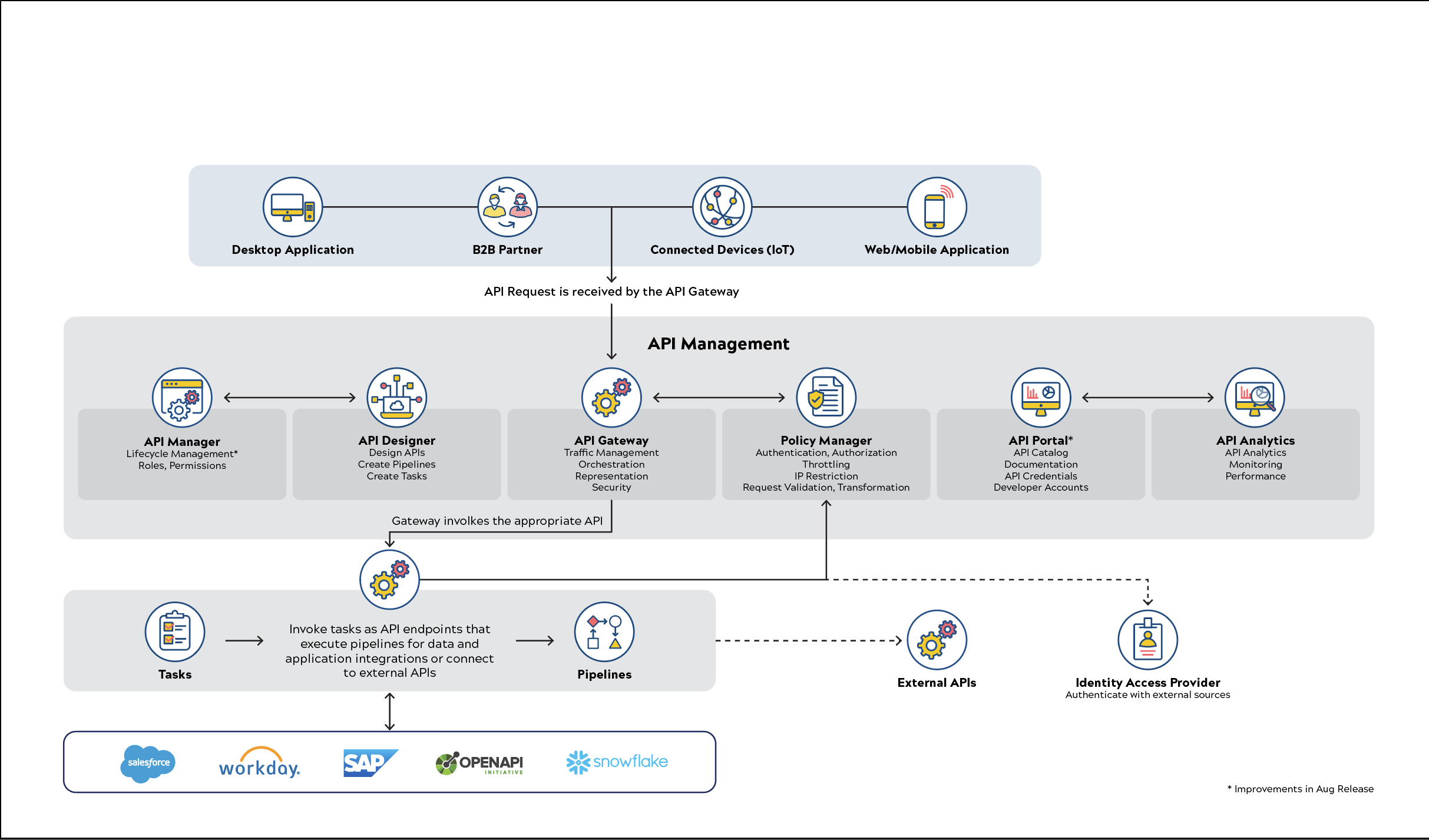API Management Architecture
The
Design-
API Manager - Design First Workflow
When you
First Workflow
You can create a new API in the /apim space of the API Manager and import or reference an API specification
that defines the API. The new API comprises a Pipeline that is the scaffolding for the API and the Task used to call it. You can then create versions, add API policies,
and modify the underlying SnapLogic assets to build the business logic for your API.
Learn how: Creating the API using Design First
Create New API from existing Pipelines and Tasks
The Pipeline-First Workflow
You can also create an API in the API Manager
by referencing existing Projects in Manager. This
allows you
to design, build, and test your Pipeline first, thereby taking advantage of your existing SnapLogic infrastructure.
As you build Pipelines and
create Triggered Tasks from them
, you vet them for production individually and concurrently.
When your Pipeline
and Tasks are production-ready, you can create APIs in the API
Manager. Learn more: Creating the API from Existing Project Assets
Limitations
Only one instance of an API policy type is applicable at
each level in the hierarchy.
When you open a Task in an API version, you cannot change it to Scheduled (not visible). Also, the Task dialog window displays the Snaplex, but it cannot be modified.
In Designer, when you open a Pipeline in an API version, the Snaplex selector in the Edit Pipeline dialog window only shows the Snaplex instances from the global shared folder.
In Designer,
if you open the Snap dialog window
from a Pipeline in the API Management -
/apimspace,
the asset or account selectors display only the assets from the global shared folder, in addition to those in the current version.
You can change
the Snaplex for an unpublished API
version. To do so, go to API Manager, choose the API, go to the Versions tab, choose the version, click Edit Details, and choose from the Server dropdown. Note: This field is disabled if the
Server Configuration
If you need a new Cloudplex server for your environment, contact support at snaplogic.com with the request to set up a Cloudplex FeedMaster node. SnapLogic Support will add a Load Balancer to the provisioned new (or existing) Snaplex. Once the Load Balancer is set up, your Org admin must update the Load Balancer information URL in Update Snaplex > Settings.Refer to this page for more information: Updating a Snaplex
API version is published or if the Snaplex is down.





